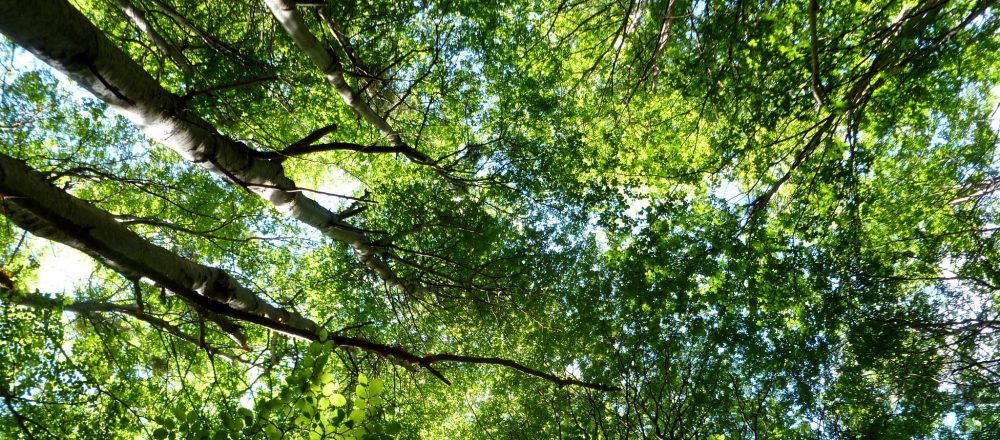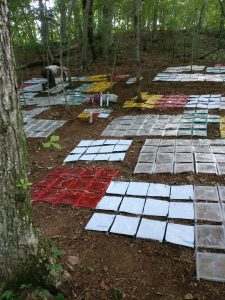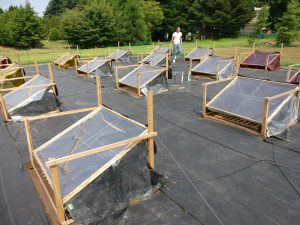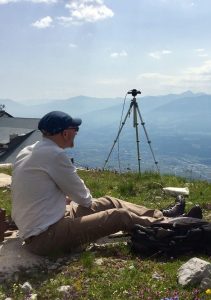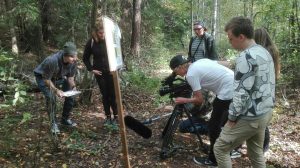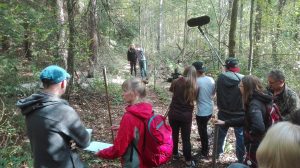Following on from the publication of our database on the network of European beech trials in Scientific Data earlier this month, I spent last week with Marta Benito-Garzon & Santa Neimane in one UK trial testing a new approach to monitoring beechnut production.

The prototypes will be deployed over this autumn and then optimized to register only falling seeds, not leaves or other objects, by validating the beechnut counts against the number of seeds caught in the bags beneath.
Once perfected the electronic monitoring system, designed by Marta Benito-Garzon (INRA Bordeaux) will allow researchers to follow the timing of autumn seed dispersal in real time from the comfort of their offices!
